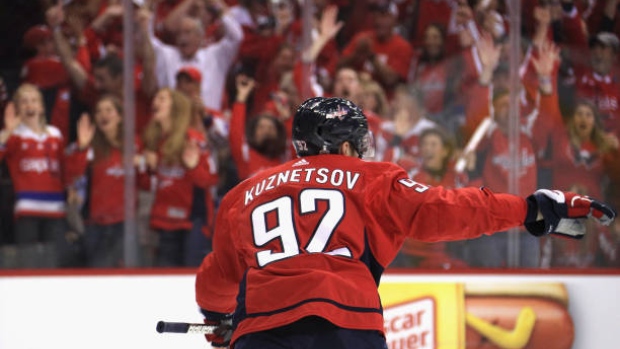Jan 3, 2019
Scoring depth makes the Capitals dangerous
Washington’s tremendous offensive depth has the team atop the Metropolitan Division and looking every bit as scary as they did during their championship season, Travis Yost writes.
By Travis Yost

At the halfway point of the regular season, most prognosticators have penciled the Tampa Bay Lightning in as the prohibitive Stanley Cup favourite.
But don’t tell the Washington Capitals that. With eight wins in their last 10 games, the Capitals have rocketed to the top of the Metropolitan Division and look every bit as scary as they did during their championship season.
What’s particularly interesting about this version of the Capitals is their tremendous depth. If you watch a Capitals game, it seems as though they’re capable of attacking in waves – not dissimilar to the style of play that has been so effective for their former Southeast Division counterpart.
Alexander Ovechkin and company tend to get a lot of the fanfare, but Washington’s depth forwards are just as deadly lately at applying sustained pressure and generating dangerous scoring chances.
The Capitals have undoubtedly evolved as an organization. In years past, they were a rather top-heavy team armed with an electric power play. They have preserved those attributes while adding considerable playmaking depth further down the lineup through a handful of savvy player acquisitions and key player development.
It’s paid considerable dividends – the type of dividends that have Washington as the league’s second-best scoring team at 5-on-5, just a tick back of league-leading Tampa Bay.
Playmaking can be a hard attribute to quantify because of how many competing definitions exist, but as a general rule we can call it something to the effect of creating better opportunity for your teammates. Some of the best playmakers in the world – think Pittsburgh’s Sidney Crosby – are notorious for not only generating heaps of scoring opportunities for themselves, but also finding prime passing lanes for their teammates. We see this manifest in the data, whether it be in teammate shooting percentage, teammate shot location, and so on.
On that teammate shot location piece: this is an area where Washington is exceptional this season. The Nicklas Backstrom line tends to get most of the attention, but Evgeny Kuznetsov (primarily the second-line centre) and Lars Eller (primarily the third-line centre) have been monstrous.
Consider the data set below. Here we have a calculation of average shot distance created by every regular centre in the NHL this season. (The data set omits all shots taken by the centre, so we are truly focusing on two wingers and two defencemen, all at 5-on-5.) Since we know shot distance is strongly correlated with goal-scoring, there is tremendous value in driving this number down.
No one has done it better than Washington’s middle-six centres:
The average shot at 5-on-5 comes from about 35 feet, so you can see that on a base of hundreds of shots, decreasing the shot distance by four to five feet per event is pretty substantial. That’s what we have with both Eller and Kuznetsov, who are consistently putting their teammates in better scoring areas than the average centre.
The cool thing here is that there are a lot of really talented players on this list, which gives the measure some obvious contextual value. Guys like Tyler Seguin, John Tavares, Ryan Getzlaf, and Jonathan Marchessault are notoriously talented offensive zone passers and all of them appear in our top 25.
Shot distance is far from the only measure indicating playmaking success, but since hockey is such a directionally straightforward game, it’s a pretty reasonable place to start. But there’s also the fact that Washington carries the league’s highest 5-on-5 shooting percentage, and, more specific to this point, the fact that their high on-ice shooting percentage isn’t exclusively driven by one line exploding for half of the season.
Keep in mind the league average on-ice shooting percentage for a skater this year is around 7.9 per cent. So not only does Washington carry a high on-ice shooting percentage at the team level, it’s driven by performance throughout the lineup (note how low the floor is for a Washington skater here). Whether it’s line one or four on the ice, the Capitals are generating attack.
Knowing what we know – that Washington as a team consistently carries high shooting percentages and that shot distances for depth Washington forwards appear to be much shorter than the average forward around the league – it’s reasonable to conclude that guys like Eller and Kuznetsov are having a pretty substantial impact. I’m sure Capitals fans are happy that both are singed in D.C. long-term.


